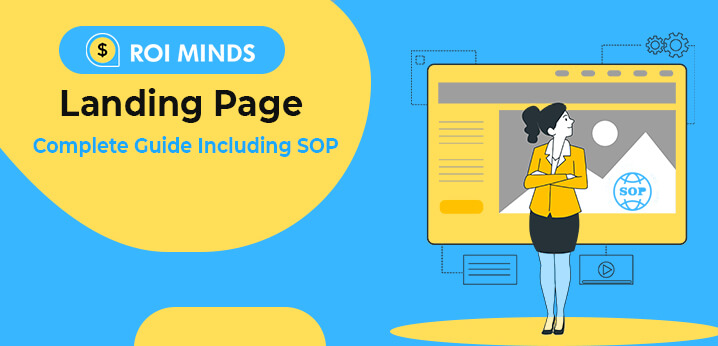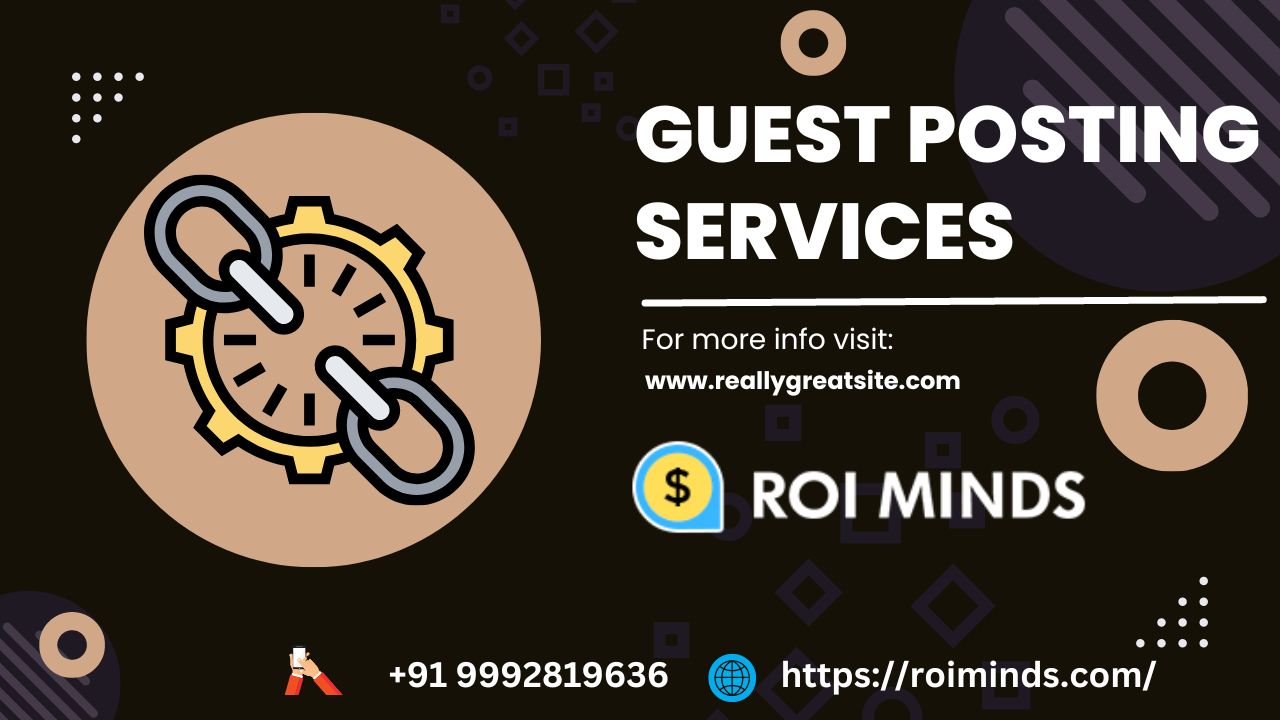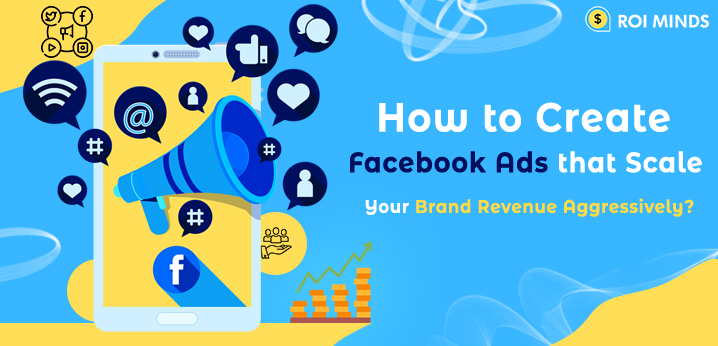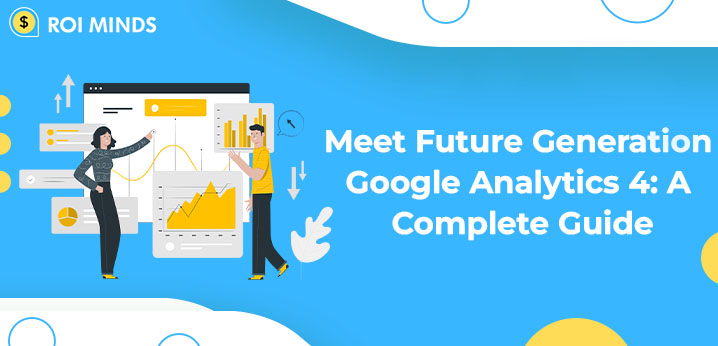If you are new to creating landing pages, this guide will help you from the finish to the start to build a great landing page that converts. Even if you have experience with landing pages, we are sure you will still learn quite a few handy tips for you to improve your landing pages.
Let us quickly explain what a high converting landing page is, as the name justifies a landing page is where a user lands after clicking on your ad from social media or search engine result pages.
The purpose of a landing page is to make the user comfortable and make them take the desired action, such as signing up for a newsletter or purchasing a product or service.
You can easily create a landing page with your product or service mentioned in it with a buy button, but there’s more to that; creating a landing page is easy but creating a landing page that converts is not.
Don’t worry! We will go through all the crucial aspects of a landing page, so you form an understanding of the “Do’s and Don’ts” of the landing page.
Here are the 5 Steps to Create a High Converting Landing Page 2023
1. Follow the Closer Formula hereby exposure ninja.
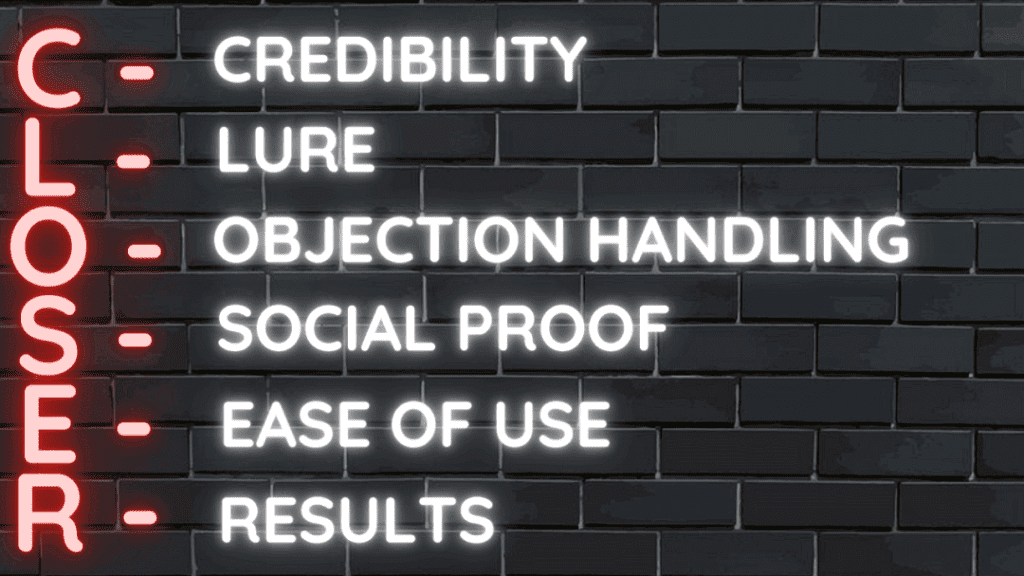
Let’s Understand the closer formula with examples.
Credibility
It’s building trust between your brand and the prospects you are trying to convert. There are several ways in which you can make credibility, such as
- By listing your product or service’s unique features.
- By demonstrating your expertise in the field.
- Background of business/brand (exp, Since 1995)
Lure
The lure is to pull prospects towards your product or service by offering features beforehand, such as freebies or valuable information.
Think from a customer perspective, and you will know what kind of offer would lure them into converting. As long as you are not forcing prospects into buying, you will just do fine.
You can offer different things to make the prospects more interested such as
- Free Reviews or Consultancy.
- Free Downloadable material like eBooks, and PDF files.
- By Offering Free assessment without them having to fill in their credit card information etc.
Objection Handling
Objection handling is one of the essential parts of a creating High converting landing page. You have to make sure that you address the possible scenarios in your landing page in advance that a customer might be thinking of.
You have to make the prospect feel comfortable. They shouldn’t feel obligated to do something; for example, you can add things such as
- No Credit Card Required
- 24/7 Support
- Cancel Anytime
- No question-asked returns
By adding these, you are already addressing the possible objections of a prospect like
- What if I ever get stuck after purchasing?
- What if I didn’t like the software or service?
- What if my product has manufacturing defects or if it doesn’t suit me?
The whole point of answering these pre-purchase questions is that you are clearing the doubts and helping the prospects make up their minds to complete the purchase. Once they bounce from your page, it’s a lost opportunity, and there’s a huge chance they will never come back to complete the purchase.
So think from a buyer’s point of view and address the objection he’s going to face, which will stop him from making the purchase; you will exactly know what kind of objection you have to answer or make clear on your landing page.
Social Proof
Most people don’t want to be the first to try a new product or service unless they are from a well-known brand, so what you have to do is make sure they acknowledge that there are many others like them who have already tried and tested your products or service and they are happy with it.
For social proof, you can add these to your landing page.
- Customers reviews
- Testimonials
- Get Influencers to be the face of your brand(Optional)
The main motive for adding social proof to your landing page is to build trust between prospects and your products. You have to make them feel that they are not alone and they are not risking anything because what they are going to buy is already tested by many other people like them, and it’s going to be worth their money.
Ease of Use
Your landing page should be easy to navigate through, and everything should be crystal clear so that a user doesn’t have to struggle to find any information they are looking for on your landing page.
You can do certain things to make them navigate through your landing page in an effortless manner, such as:
- Using Clear CTA
- Avoid using jargons
- Clear and Concise information
- Understanding their problem and providing them with a fix
If you are making your landing page easy to navigate, you are doing your business and your prospects a favour, which will ultimately benefit both.
Result
Your CTA must deliver the result, or at least it should indicate that they are going in the right direction. People purchase from you to get their desired results.
You have to make sure that your prospects think they are going in the right direction.
Let’s understand it with an example, Suppose a prospect who runs a shoe business or a retailer wants to increase sales by running ads on social media. Hence, he searches for digital marketing agencies.
He’s currently at A point and wants to go to C point.
A Point – His Current State – Looking for more sales.
B Point – Your CTA – Free Consultancy
C Point – His Goal – To Increase his sales with social media marketing.
He bumps into your ad or website in search results and lands on your page (Landing page). Now, if you have a good landing page and your CTA is clear; it’ll say one of these-
- Book your free assessment now
- Get Free insights on your Online store.
- Book a Free Consultation call
Your prospects now know that they don’t have to buy your service straight away; they can get more insights to make their mind up for the purchase.
You can’t just convert a prospect into a customer by direct selling; you have to break down your customer’s journey into small milestones, so they get to know that they are moving in the right direction, which will ultimately lead to their desired result.
2. Divide Your Landing Page into Segments
Now that we have established the fundamental facts of creating a landing page, let’s dive into the step-by-step guide. Keep in mind that there is no such thing as a perfect landing page, and you don’t have to copy the exact layout we use as an example. You can customize and add your own creative touches.
To help you understand the various segments of a landing page, we have divided them into boxes, labelled B1, B2, B3, etc. You do not have to follow this exact format; it is for educational purposes only.
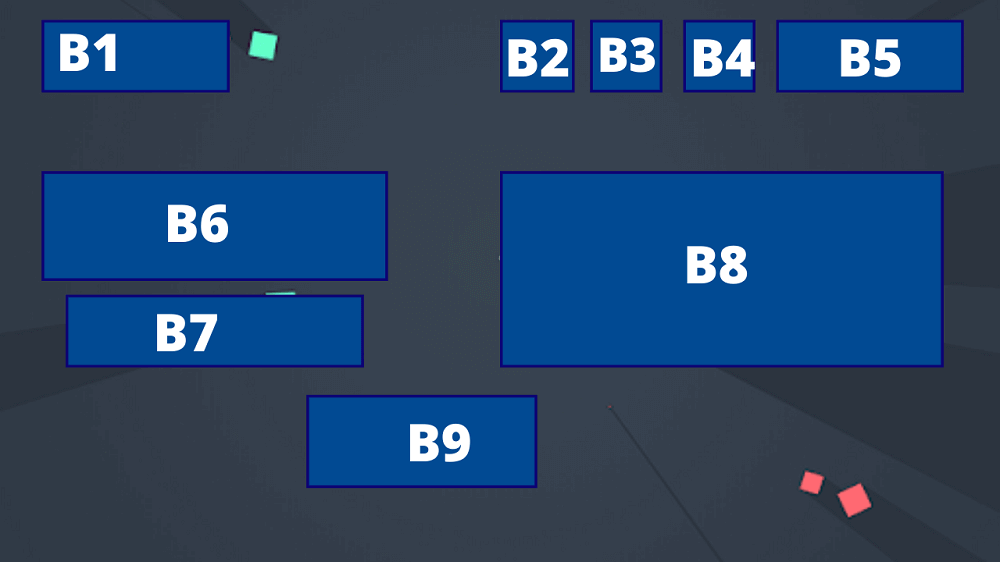
Let’s take a closer look at each “B” and how to use it:
B1: Use this box to display your brand name or logo.
B2, B3, B4: These boxes can be used to add important sections, such as “About Us,” “Services,” or a home button.
B5: This box is crucial because it contains your Call-to-Action (CTA). We recommend using B5 solely for your CTA.
B6: This box contains your header text.
B7: This box contains supportive or additional text to explain your product or service.
B8: This box can be used for various purposes, such as a short video, customer reviews, awards, or any other message about your product or service.
B9: This box should contain your CTA but can be used for other purposes if needed.
Remember to include multiple CTA buttons in different locations on your landing page. Try using different CTAs, such as “Book Your Free Call” or “Get Free Consultancy Now,” to see which one converts best.
B1 to B9 are the crucial elements of your landing page above the fold. You can add more information if needed to help clarify and explain your product or service.
After you’ve created the above-the-fold section, it’s time to add more details and creative touches to build trust among your prospects.
B1 should have your CTA button, and B2 and B3 can be used to explain your product or service with text, video, GIF, etc. You can also use B4 and B5 to add customer testimonials or reviews.
Use B6 again as your CTA button. Remember, the CTA button is the most important part of the landing page, so make it clear and visible.
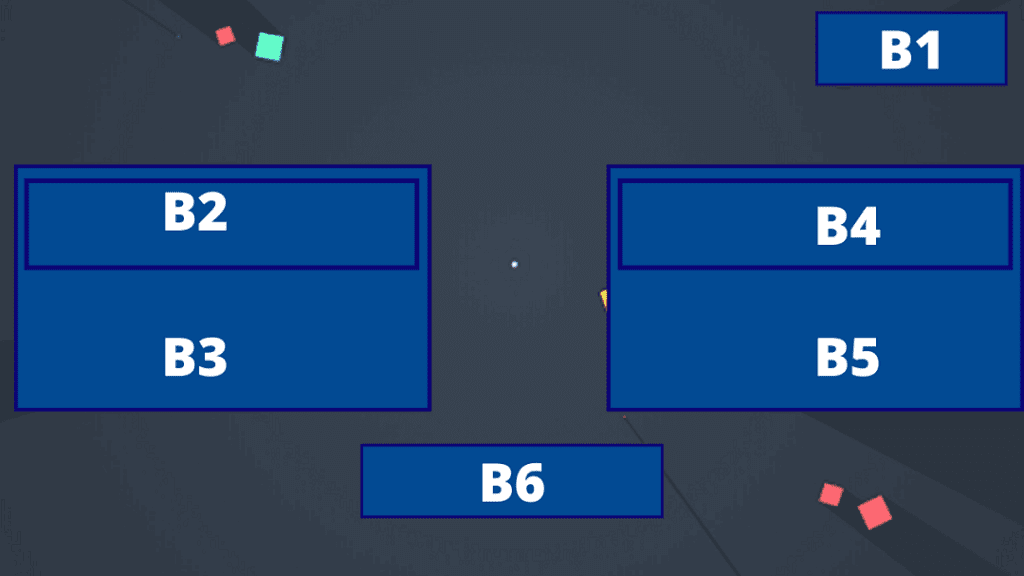
After you have made changes above the fold of your landing page, it’s time to add more details and crafty touches in the latter part of your landing page to make it look good and build trust among the prospects.
B1 again will have your CTA. Make sure you have at least 1 CTA button on the landing page’s visible part even when a user is scrolling through.
B2 and B3 will help you explain your product or service with either text, video, GIF, etc. The same goes for B4 and B5. You can also use these to add your customer’s testimonials or reviews.
Use B6 again as your CTA button; the main reason we are focusing on the CTA button is that it’s the most important part of the landing page, and if your CTA is not clear and not visible, you are not going to get the conversions.
The number one reason we are building a landing page is to convert, right? And the better you craft your CTA button, the better results it’s going to generate for you.
Now you have a good understanding of how to create a landing page from start to finish. It is time we discuss some essential things to do and to not do on your landing page.
3. Dos and Don’ts to Build an Outstanding High Converting Landing Page that Converts Better.
Do’s:
- Make sure your landing page is mobile-friendly. According to a study, most users convert on mobile devices.
- Include Personalized pictures and videos to build trust with your prospects which will help you convert them at a better rate.
- Answer their questions first before trying to convert. That means you should try to focus on the possible objection a prospect might be facing that’s holding them back from taking the desired action. So always try to answer the possible objections on your landing page.
- Write Great Headlines with Crystal Clear Descriptions. Don’t go into too much detail; keep your messages straight and clear for prospects to understand.
- Use Strong Calls-to-Action (CTAs) on your high converting landing page. Your CTA should not contain a standard message like “buy now” or “call me,” etc. It should be catchy like ‘Get Yours Right Now’ or “Request Free Callback.”
Don’t:
- Ensure you only provide brief information on the landing page and link it to another page if your product or service requires a technical explanation. DON’T flood your landing page with a giant wall of text.
- DON’T fail to redirect your lead. Your prospects should have a clear idea all the time of what they are doing and where they are going with your landing page redirection.
- DON’T use Confusing Jargon on your landing page. Make sure your headings and description provide crystal clear information that should be understandable by a non-technical person.
- One of the common mistakes people make when creating landing pages is asking for too much personal information that pushes prospects away. So make sure you DON’T ask for too much information and try to avoid asking for personal information at all.
- Don’t exaggerate or make unrealistic promises. Today’s consumer is smart, and they have access to tons of information, so DON’T try to outsmart the customer for the sake of conversions. Even if you get the conversions, that will still hurt your brand in the long run.
4. Evaluate Your High Converting Landing Page According to the Conversion Rate
Now there is no fixed number of conversions to call a landing page good or bad. For some businesses, a 5% conversion rate is good enough, and for others, even 15% is bad; it depends on your business’s nature and what kind of prospects you are trying to convert. If you are running a campaign to get more subscribers, then a conversion rate that stays within 10-40 % is good, but if you are selling expensive/luxury products, then a 5% conversion rate is considered good enough.
5. Conversion Funnel on the Landing Page
Always keep in mind that people on your High converting landing page are, most of the time in the final stage of the conversion funnel. We will not talk about the whole conversion funnel but focus only on the last step because it’s linked to the landing page.
If you want to read more about the conversion funnel, you can head over to this article.
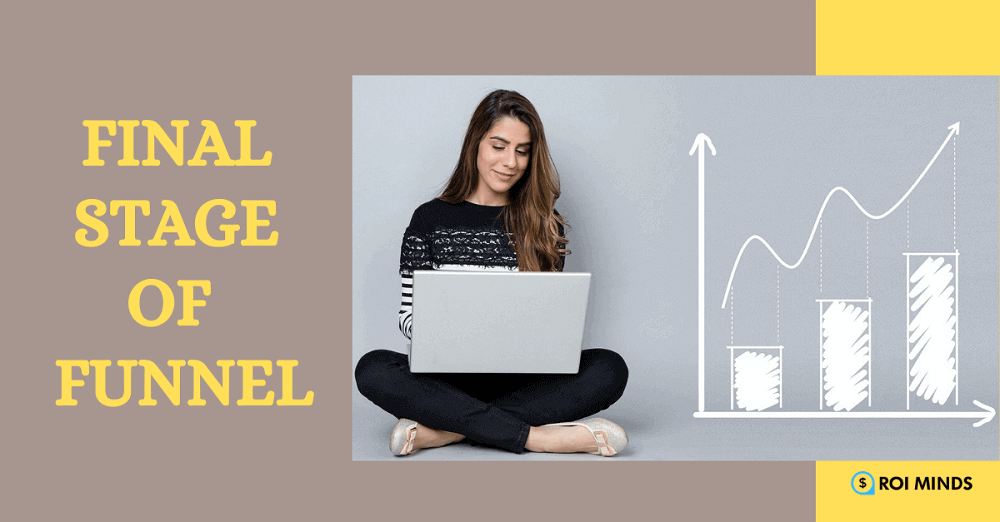
Prospects have already made up their minds and have done their research on similar products or services, and they are ready to buy, now it’s up to your landing page how well it can convert.
Final Words
A good landing page can significantly help you to supercharge your conversion rate and sales. You should invest your time building different landing pages for different products to check out which works best for your brand.
If you have any doubts or confusion, please contact us on any of our Social media platforms below. We will be more than happy to help you with the same.

